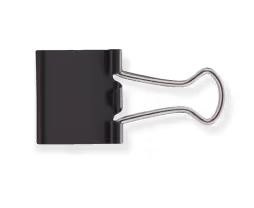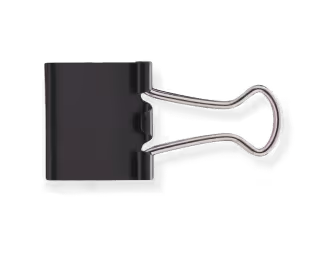Complete Guide to Analytics in UX Design: What to Analyze and How
In an era where thousands of brands compete head-to-head for the same audience with similar technical resources, the margin for guesswork keeps shrinking. Being able to parse through user data gives you a sharp competitive edge.
It gives you the power to understand user behavior more effectively and make data-informed decisions for better conversions. UX analytics is, by no means, limited to Google Analytics.
It's a complex discipline that requires understanding multiple data sources and knowing how to interpret them correctly. Google Analytics is just one tool in a much larger toolkit.
So what do you measure, how do you measure it, and more importantly, how do you act on your findings? That's what we are going to explore in this segment.
TL;DR:
- Focus on tracking task completion rather than just website traffic. Track whether users complete key actions like signups or purchases, instead of just how many visit or how long they stay.
- Combine quantitative heatmaps with qualitative user feedback for complete insights. Feedback from surveys and interviews gives you the context needed to make smart design changes that actually solve user problems.
- Use centralized dashboards to spot patterns across multiple analytics tools, instead of jumping between Google Analytics, Hotjar, and survey platforms separately.
- Focus improvements on signup processes, checkout flows, and onboarding sequences. These are the areas where small UX fixes can have the biggest measurable impact on your conversion rates and bottom line.
What is UX Analytics
UX analytics, by definition, is the systematic collection and analysis of user interaction data to understand how people engage with your digital product. It combines quantitative metrics with behavioral insights to reveal patterns in user actions, preferences, and pain points.
So, what makes user data analytics such an integral part of UX design? The answer is simple - data is everything in today's competitive market.
Being able to predict user behavior accurately, understand what your potential customers want, and identify where they struggle becomes the difference between success and failure.
Unless you have complete clarity on these behavioral patterns, your chances of meaningful engagement, lead generation, or conversions are slim.
The point of UX analytics is to make your SaaS product, website, web app, or mobile app work better for users. When you understand how people interact with your interface, you can fix problems before they become major roadblocks.
Organizations worldwide have already recognized this shift and started implementing data-driven design processes.
Studies show 3 in 5 companies now use data analytics to drive product innovation and improve user satisfaction. The purpose goes beyond just collecting numbers - it's about transforming those insights into actionable design decisions.
Here's why UX analytics is indispensable for UX design:

- Helps Identify Design Gaps: UX analytics helps you spot friction points where users get stuck, abandon tasks, or experience confusion before these problems affect your bottom line.
- Speeds up User Journey: Data reveals the most efficient paths users take through your product, allowing you to streamline workflows and remove unnecessary steps.
- Improves Browsing Experience: Understanding user preferences helps you design experiences that feel intuitive and meet actual needs rather than assumed ones.
- Improves User Retention: Analytics show you which features keep users coming back and which ones cause them to leave permanently.
- Improves Conversion Rate: By tracking user behavior through your funnel, you can identify exactly where potential customers drop off and why.
One more thing we would like to add here.
UX analytics doesn’t follow a one-size-fits-all formula, and neither do user journeys. The way people explore a product or service can vary widely based on who they are and what they need. That’s especially true when you compare B2B and B2C behavior.
B2B paths are longer, involve more back-and-forth, and include multiple decision-makers. B2C journeys tend to be faster, driven by immediacy and emotional pull.
With UX analytics, you can design for those unique patterns, adjusting flows, content, and calls to action to match the user’s mindset. That kind of clarity directly improves your odds of keeping people engaged, interested, and moving forward.
Clarity comes from a strategic analysis of relevant data. Now, the question is - what kind of data should you collect to make informed UX decisions?
Types of Data for UX Analytics
The foundation of effective UX analytics lies in collecting the right kind of information about your users. Without proper data collection, you're essentially designing in the dark and hoping your assumptions match reality.
Across various industries, the average web user spends 52 seconds on a web page. So, unless you have crystal clear insights on how to capture their attention and convince them that your solution is exactly what they are after, you're fighting an uphill battle.
You need comprehensive data collection strategies for this, and that's where UX data analytics comes in handy. Now, there are two types of data you can collect broadly.
1. Qualitative UX Data
Qualitative data tells you the "why" behind user actions and reveals the emotional and psychological factors driving user behavior. This type of data captures user motivations, frustrations, and thought processes that numbers alone cannot explain.
What qualitative data includes:
- User interviews and feedback sessions: Direct conversations with users about their experiences, preferences, and challenges when using your product or website.
- Usability testing observations and comments: Real-time feedback and behavioral observations as users complete specific tasks or navigate through your interface.
- Survey responses with open-ended questions: Written feedback that allows users to express thoughts and opinions in their own words rather than selecting predetermined options
- Customer support conversations and complaint logs: Documentation of user problems, questions, and frustrations that reveal common pain points and areas for improvement.
- Social media mentions and reviews: Unsolicited user opinions and experiences shared publicly on platforms like Twitter, LinkedIn, or review sites.
- Heat map click patterns and scroll behavior: Visual representations of where users click, how far they scroll, and which areas of your pages receive the most attention.
What qualitative data reveals:
- Why users abandon certain pages or features: The specific reasons and emotions behind user drop-off points that quantitative data can't explain.
- Emotional reactions to design elements: How users feel about colors, layouts, copy, and visual components that influence their decision-making process.
- Pain points that cause frustration or confusion: Specific moments where users struggle, get lost, or become annoyed with your interface or content.
- User expectations and mental models: How users think your product should work based on their past experiences and cognitive patterns.
- Language preferences and terminology understanding: Whether your copy resonates with users and if technical terms or jargon create barriers to comprehension.
- Feature requests and desired improvements: What users want to see added, changed, or removed from your product based on their actual needs.
How to collect qualitative data:
There’s no shortage of ways to collect qualitative insights. You just need to know where to look and how to ask the right questions. Below are some practical methods you can start using right away:
Now, while qualitative data gives you rich context and real human feedback, it’s not enough on its own. You still need to know how many users are affected, how often an issue occurs, and where exactly it happens across your funnel.
That’s where quantitative data comes in. It gives you the scale and direction, so you can prioritize fixes, validate assumptions, and measure progress with actual numbers.
Let’s break that down next.
2. Quantitative UX Data
Quantitative data provides the numerical foundation for your UX decisions by measuring user behavior through concrete metrics and statistics. This data type answers the "what" and "how much" questions about user interactions with measurable precision.
What quantitative data includes:
- Website traffic and page views: Raw numbers showing how many people visit your site, which pages they view, and how traffic flows between different sections.
- Conversion rates and funnel metrics: Percentage of users who complete desired actions like signing up, making purchases, or downloading resources at each stage.
- Time-based metrics (session duration, time on page): Measurements of how long users spend engaging with your content and overall site experience.
- Click-through rates and engagement metrics: Data showing which elements users interact with most and how often they click on specific buttons, links, or features.
- Bounce rates and exit rates: Statistics revealing where users leave your site and how quickly they abandon pages without taking action.
- A/B test results and performance comparisons: Numerical outcomes from testing different design versions to see which performs better with actual users.
What quantitative data reveals:
- Usage patterns and user flow trends: Clear pictures of the most common paths users take through your site and where traffic concentrates.
- Performance benchmarks and goal achievement: Concrete measurements of whether your UX changes are actually improving key business metrics.
- Problem areas with high drop-off rates: Specific pages or steps in your process that consistently lose users, indicating design or usability issues.
- Feature popularity and adoption rates: Which parts of your product get used most and least, helping prioritize future development efforts.
- Seasonal trends and user behavior changes: How user interactions shift over time, revealing patterns that inform design and content strategies.
- Device and browser usage statistics: Technical insights about your audience that influence responsive design and compatibility decisions.
How to collect quantitative data:
Here’s how to start gathering the kind of data that lets you measure UX with accuracy and context:
Now that you know what types of data to collect, the next challenge becomes knowing which specific metrics actually matter for your business decisions. Raw data means nothing without proper interpretation and focus on the right indicators.
How Businesses Can Use UX Analytics Data to Improve ROI?
Once you’ve started collecting data, the next course of action is making sense of it in ways that actually support business decisions. UX analytics doesn’t just tell you what users are doing. It also helps you figure out where to invest next. Should you rework that signup form, build a new feature, or optimize infrastructure before scaling?
Here are some of the most telling metrics product managers use to evaluate and adjust design direction:
Once you have zeroed in on the metrics to analyze, it’s time to find reliable tools to actually capture and analyze this information effectively. The right analytics platform can make the difference between guessing about user behavior and making data-driven design decisions.
Best Tools for UX Analytics in 2025

As we mentioned earlier, Google Analytics provides a solid foundation for basic user behavior tracking. Still, for deeper insights into user experience, you need specialized tools designed for various UX analysis purposes.
Here are the tools our in-house UX designers at Beetle Beetle recommend using based on years of practical experience:
- Hotjar: We love how it combines heatmaps, session recordings, and user feedback in one platform, giving us both quantitative clicks and qualitative user sentiment data.
- Mixpanel: Great for tracking specific user actions and events throughout the user journey, especially when you need to analyze complex user behaviors across multiple sessions.
- Amplitude: Excellent for cohort analysis and understanding how different user groups behave over time, which helps us identify retention patterns and feature adoption rates.
- FullStory: The search functionality is incredibly powerful for finding specific user interactions, and the automatic capture of all user sessions means we never miss important behavioral insights.
- Crazy Egg: Simple but effective for basic heatmap analysis and A/B testing, handy when you need quick visual insights without complex setup requirements.
- UserTesting: Nothing beats watching real users interact with your product while they verbalize their thoughts, giving us context that pure analytics tools simply cannot provide.
- Maze: We use Maze to run unmoderated usability tests early in the design cycle. It helps validate design choices quickly with real users and actionable insights.
- Lyssna (Previously, UsabilityHub): This one is great for preference tests and click tests. It gives us fast feedback on visual hierarchy, CTA clarity, and layout effectiveness from diverse user panels.
Tracking individual UX metrics gives you valuable insights, but when you’re pulling reports from five different tools, it’s easy to lose focus. You might spot a drop in conversions in one report, but miss the fact that load times also spiked during the same period.
That’s why it helps to bring all your data into one place.
Using a Centralized Dashboard to Track UX Metrics
Once multiple tools are running, a dashboard can tie everything together. It gives you a single view of what's working and what needs a second look.
Instead of juggling between heatmaps, GA4 reports, and survey results, you can view them all in one clean layout - filtered, grouped, and updated in real time.
Here’s how we usually make it work:
- Connect data sources like Google Analytics, Hotjar, and survey tools to one reporting system (e.g., Looker Studio).
- Group related metrics together (engagement, conversions, error rates) so you can compare across different user flows.
- Add filters for device types, regions, or traffic sources to uncover more specific patterns.
- Set up visual alerts or trend lines to catch sudden changes or dips before they impact performance.
Having a central dashboard saves time, but more importantly, it keeps your team focused on the right questions.
Once your setup is ready, the next step is to know how to get started with UX analytics the right way.
How to Perform UX Analytics (+ A Few Extra Tips)

Setting up UX analytics requires a systematic approach that aligns with your business objectives and user needs. Many teams rush into data collection without proper planning, which leads to information overload and missed opportunities for meaningful insights.
Here’s a focused way to start strong and avoid early missteps.
1. Set Clear Experience Goals
UX analytics works best when it’s tied to outcomes, not just activity. Ask yourself: what do you want your users to achieve, and how will you know they did it?
- Define what success means for your product. This could be completing a form, finishing a task, or navigating a key page.
- Stick to a few focused goals instead of trying to measure every interaction.
- Connect each goal to a measurable behavior, like scroll depth, button clicks, or conversion events.
- Make success measurable. If it can’t be tracked clearly, it can’t be improved.
When you’re clear on what success looks like, every data point has context.
2. Choose the Right Tech Stack
- Evaluate tools based on your defined goals and budget constraints
- Test free versions or trials before committing to paid plans
- Ensure chosen tools integrate well with your existing tech stack
- Plan for team training and onboarding with new analytics platforms
3. Implement Tracking and Integration
Proper implementation requires careful planning to ensure data accuracy and compliance with privacy regulations. Work with your development team to set up tracking codes, configure goals, and establish data collection protocols that won't slow down your site performance.
Extra tips:
- Add event tracking to key components in your early builds, not just after launch.
- During sprints, bake in time to define what data each new feature should produce.
- Use draft dashboards, even in testing, to make sure you're aligning analytics with real UX goals.
This gives you cleaner data and fewer surprises when it’s time to make decisions.
4. Track What Matters, Not Just What’s Easy
It’s tempting to focus on numbers that are easy to find, like pageviews, bounce rates, or time spent on a page. But those metrics, on their own, don’t explain whether your design is helping users achieve anything. They’re often disconnected from real outcomes.
- Start with your critical flows. These are actions like signing up, submitting a form, completing a checkout, or onboarding successfully. If users drop off during these, you lose business. Track every step, not just the final click.
- Watch for signals of friction. Repeated clicks on the same button, rage clicks, or constant toggling between pages often point to confusion or bugs. These are early warnings that something isn’t intuitive.
- Track time-to-completion. Not just whether users complete something, but how long it takes them. A checkout flow that takes two minutes instead of twenty seconds may be quietly killing conversions.
- Filter out vanity metrics. Metrics like “time on site” or “pageviews” don’t mean much unless tied to a meaningful outcome. A user spending five minutes on your pricing page could mean interest or total confusion.
High-value UX analytics tells a story. Not about how many people visited, but how many found what they needed, got through your experience smoothly, and came back.
5. Monitor and Validate Your Data
Regular monitoring ensures your analytics continue providing accurate insights as your product evolves. Set up routine checks to verify data quality and identify any tracking issues that might skew your analysis or lead to incorrect conclusions.
Create a schedule for reviewing analytics performance and making necessary adjustments to your tracking setup. This proactive approach prevents small issues from becoming major data problems that could mislead your design decisions.
- Schedule weekly data quality reviews
- Set up alerts for unusual traffic patterns or data anomalies
- Regularly audit tracking implementation after site updates
- Cross-reference data between different analytics tools for accuracy
The foundation is now in place, but raw data alone won't improve your user experience. The next step involves turning those numbers and insights into concrete design improvements.
How to Synthesize Analytics into Design Decisions
The purpose of UX analytics isn’t limited to describing what users did. It is to inform you of what you should do next. Good data highlights where friction exists; great interpretation tells you how to reduce it.
When synthesized correctly, analytics becomes a direct input into design decisions that improve usability, retention, and overall product performance.
Below is a simple breakdown of how to move from raw insight to practical action:
Once analytics starts guiding your design decisions, the entire workflow becomes clearer. You move away from design debates and toward user-backed improvements.
That clarity extends beyond UX and directly impacts how your product performs and how your business grows. Here’s how:
Benefits of Using UX Analytics in UX Design
Data-backed UX and insight-driven product decisions are making noticeable transformations across industries. Top organizations stay ahead because they adapt quickly to what their users actually need.
In a 2023 survey, the majority of businesses said investment in data and analytics was a top priority. The returns on that investment extend across customer acquisition, retention, and overall operational efficiency.
Here are some of the most direct, measurable ways UX analytics contributes to product and business growth:
- Lower customer acquisition cost (CAC): When you fix leaks in critical flows, more users complete the actions they came for. This means your existing traffic brings in more qualified leads, without increasing your ad spend.
- Higher retention and product engagement: If users hit fewer roadblocks and can achieve their goals faster, they’re more likely to return. Analytics helps spot the exact steps where drop-offs happen so you can fix friction before users leave.
- Smarter product roadmap decisions: Usage data shows where people struggle or stop short of completing key tasks. You can use this to prioritize improvements that have a measurable impact, rather than guessing what users want.
- Faster iteration and fewer redesign cycles: With objective data, teams can move quickly to fix real issues instead of debating opinions. You release updates based on evidence, which reduces the need for frequent overhauls.
- Clearer collaboration across teams: Everyone, from product managers to designers to engineers, can look at the same data and reach the same conclusions. It keeps the team focused on solving the right problems, not chasing separate goals.
When used thoughtfully, UX design analytics can shape better outcomes for your users.
If you're serious about improving user experience and product performance, it's worth investing in the tools and processes that bring clarity to every design decision.
And if you’re looking for expert support to set up or refine your UX analytics workflow, consider partnering with someone who knows how to turn insight into impact.
How Beetle Beetle Can Help?
One of the most transformative applications of UX analytics is website design. If you are a B2B SaaS business looking to create a strong brand identity, you know how challenging it can be to stand out.
Poor loading speeds, confusing navigation flows, and a lack of mobile optimization can instantly turn potential customers away before they even understand what you offer.
Plus, given the sheer magnitude of competition in the SaaS space, your website UX needs an X-factor. Example: personalized user journeys that adapt based on visitor behavior or interactive product demos that showcase your software's capabilities in real-time.
Beetle Beetle can help you turn these analytics insights into high-converting design solutions. Here's what we do differently:
- Data at the front and center: We rely on comprehensive UX analytics to guide every design choice, ensuring your website performs based on user behavior patterns, not assumptions.
- Strategic market positioning: Through thorough market and competitor analysis, we identify gaps in your industry and position your brand to fill them effectively.
- Custom visual storytelling: Our in-house illustrators and designers create unique visual identities for your SaaS brand that communicate complex technical concepts through compelling, memorable design.
- Conversion-focused optimization: We continuously test and refine user flows using analytics data to maximize lead generation and customer acquisition.
When you combine strategic UX analytics with expert design execution, the results speak for themselves.
Curious to learn more about our process, pricing, and ETA? Simply book an intro call with us for details.
FAQs
1. What is data analysis in UX design?
It’s the process of reviewing user behavior data, both quantitative and qualitative, to understand how people interact with a product and where improvements are needed.
2. What is a UX design analyst?
A UX design analyst interprets user data to identify design issues, test solutions, and support product teams in creating better experiences backed by real insights.
3. How can I address privacy concerns when tracking user behavior?
Respect for privacy starts with a responsible setup. Anonymize all data, ask for user consent, and comply with regulations like GDPR and CCPA. Avoid collecting personally identifiable information unless absolutely necessary.
4. Is there a UX analytics checklist I can follow?
Yes, here’s a quick one to get started:
- Define 2–3 clear user goals
- Choose tools based on what insights you need
- Track behavior in critical flows like onboarding or checkout
- Use heatmaps, form analytics, and session replays for deeper insight
- Pair behavior data with user feedback
- Translate findings into design updates and track changes
5. What are the best tools for UX analytics?
It depends on what you're tracking. Use Google Analytics for traffic and funnels, Hotjar for heatmaps and session recordings, and Maze or UsabilityHub/Lyssna for testing and feedback. Choose tools based on your goals.
































